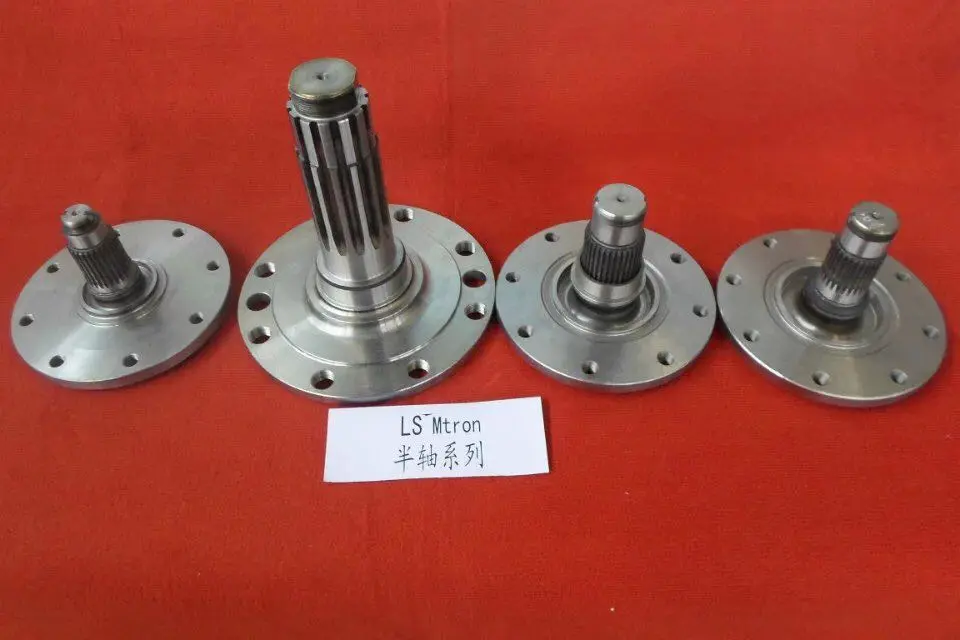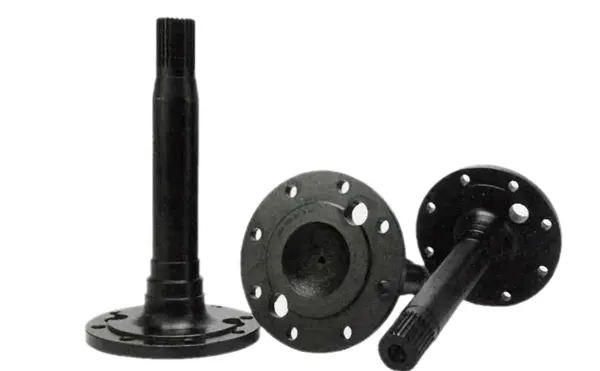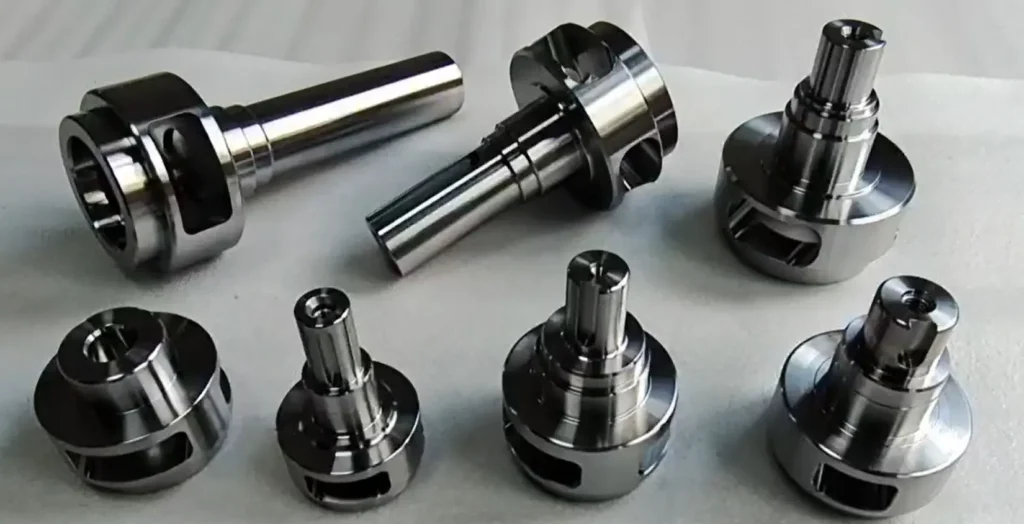Stub Shaft: Essential Guide to Types, Applications, and Benefits
Stub shafts play a crucial role in various mechanical systems, offering reliability and efficiency in transferring torque and power. Understanding the nuances of stub shafts is essential for optimizing machinery performance and ensuring longevity. In this comprehensive guide, we explore everything you need to know about stub shafts, from their types and applications to installation tips and future trends.
Introduction to Stub Shaft
Stub shafts are short, stout shafts used to transmit torque between components in machinery. They serve as critical linkages in mechanical power transmission systems, facilitating the movement of power from one rotating part to another. Whether in industrial equipment, automotive applications, or agricultural machinery, stub shafts play a pivotal role in ensuring smooth operations and efficient power transfer.
Types of Stub Shafts
Axle Stub Shaft
Axle stub shafts are commonly found in automotive and agricultural applications, connecting the axle to the wheel hub. They withstand substantial torque and load forces, contributing to vehicle stability and traction.
PTO Stub Shaft
Power Take-Off (PTO) stub shafts transmit power from the engine to auxiliary equipment such as pumps, generators, or agricultural implements. They are designed to handle varying loads and rotational speeds, making them versatile in agricultural and industrial settings.
Spline Stub Shaft
Spline stub shafts feature grooved surfaces (spline teeth) that engage with corresponding components, offering secure torque transmission with minimal backlash. They are used in precision machinery and applications requiring precise angular positioning and torque transfer.
Applications of Stub Shafts
Industrial Applications
In industrial machinery, stub shafts are integral components in conveyor systems, gearboxes, and manufacturing equipment. They facilitate the movement of rotational energy, enabling the operation of heavy-duty machinery with precision and reliability.
Automotive and Agricultural Uses
Automotive stub shafts connect drive axles to wheels, ensuring efficient power transmission and vehicle maneuverability. In agriculture, PTO stub shafts enable the operation of equipment such as tractors, harvesters, and irrigation pumps, enhancing productivity in farm operations.
Design and Components of Stub Shafts
Materials Used
Stub shafts are typically made from high-strength alloy steels or stainless steels, chosen for their durability, fatigue resistance, and ability to withstand varying operating conditions. The selection of materials ensures optimal performance and longevity in demanding applications.
Features and Specifications
Stub shafts vary in size, length, and configuration based on specific application requirements. They may feature surface treatments or coatings to enhance corrosion resistance and wear protection, prolonging service life and reducing maintenance needs.
Installation and Replacement of Stub Shafts
Steps to Install a Stub Shaft
Installing a stub shaft involves precise alignment and secure fastening to ensure proper engagement and torque transmission. It requires careful calibration of components and adherence to manufacturer specifications for torque settings and assembly procedures.
Considerations for Replacement
When replacing a stub shaft, factors such as compatibility, dimensional accuracy, and material properties must be considered to maintain system integrity and performance. Regular inspection and timely replacement of worn or damaged stub shafts prevent costly downtime and equipment failures.
Benefits of Using Stub Shafts
Enhanced Efficiency
Stub shafts minimize power loss and inefficiencies in mechanical systems, optimizing energy transfer and improving overall equipment performance.
Reduced Maintenance Costs
By withstanding high loads and operating conditions, stub shafts reduce the frequency of maintenance and replacement intervals, lowering operational costs and enhancing equipment reliability.
Challenges in Stub Shaft Design
Overcoming Design Limitations
Design challenges in stub shafts include balancing strength with weight, optimizing stress distribution, and addressing dynamic forces during operation. Advanced engineering techniques and materials help mitigate these challenges, enhancing stub shaft durability and performance.
Maintenance and Durability Issues
Proper lubrication, monitoring of operating conditions, and periodic inspection are essential to prevent premature wear, fatigue, and potential failure of stub shafts. Addressing maintenance issues promptly extends component lifespan and ensures operational safety.
Innovations in Stub Shaft Technology
Advancements in Materials and Manufacturing
Technological advancements in metallurgy, heat treatment, and machining processes enable the production of stub shafts with enhanced strength, durability, and dimensional accuracy. Continuous innovation drives improvements in performance and reliability across diverse applications.
Future Trends in Stub Shaft Design
Future trends in stub shaft design focus on lightweight materials, advanced coatings for wear resistance, and integration of smart technologies for condition monitoring and predictive maintenance. These innovations aim to enhance efficiency, reduce environmental impact, and meet evolving industry demands.
Choosing the Right Stub Shaft for Your Application
Factors to Consider
When selecting a stub shaft, consider factors such as load capacity, operating environment, dimensional requirements, and compatibility with existing machinery. Consult with engineers and manufacturers to tailor stub shaft specifications to meet specific application needs effectively.Please contact with
Welleshaft engineer to make quote for your RFQ’s
Customization Options
Manufacturers offer customization options for stub shafts, including tailored designs, materials, and surface treatments. Customized solutions optimize performance, longevity, and operational efficiency, ensuring seamless integration into diverse mechanical systems.
Conclusion
Stub shafts are indispensable components in mechanical power transmission systems, providing robustness, reliability, and efficiency across various industries. Understanding their types, applications, and benefits empowers engineers and stakeholders to make informed decisions in machinery design, maintenance, and optimization.
FAQs about Stub Shafts
1. What is a stub shaft?
A stub shaft is a short, stout shaft used in mechanical systems to transmit torque between rotating components. It typically connects two parts of a machine, such as an engine and a gearbox or a motor and a wheel hub, allowing for the transfer of rotational energy.
2. How do stub shafts differ from other shaft types?
Stub shafts differ from other shaft types primarily in their length and application. They are shorter and stouter compared to longer shafts used for extended power transmission. Stub shafts are designed for specific torque transmission needs within confined spaces or between closely positioned components.
3. What are the common applications of stub shafts?
Stub shafts find widespread applications in various industries and mechanical systems, including:
Automotive: Connecting drive axles to wheel hubs in vehicles.
Industrial Machinery: Transmitting power between motors, gearboxes, and conveyor systems.
Agriculture: Powering agricultural equipment such as tractors, harvesters, and irrigation pumps through PTO shafts.
Marine: Linking engines to propeller shafts for propulsion in boats and ships.
4. How do you install a stub shaft?
Installing a stub shaft involves several key steps:
Preparation: Ensure the shaft and mating components are clean and free from debris.
Alignment: Align the shaft correctly with the mating part to prevent misalignment and premature wear.
Fastening: Securely fasten the shaft using appropriate fasteners (bolts, nuts, etc.) according to manufacturer specifications.
Torque Application: Apply torque to fasteners as specified to ensure proper engagement and torque transmission.
Testing: After installation, perform functional tests to verify proper operation and alignment.
5. What materials are used in manufacturing stub shafts?
Stub shafts are commonly manufactured from high-strength alloy steels or stainless steels, chosen for their durability, fatigue resistance, and ability to withstand varying operational conditions. These materials undergo heat treatment processes to enhance hardness, toughness, and wear resistance, ensuring reliable performance in demanding applications.
6. What is another name for a stub axle?
Another name for a stub axle is a stub spindle. These terms are often used interchangeably to refer to the short axle or spindle that supports the wheel hub assembly in vehicles and machinery.
7. What is stub axle used for?
A stub axle, or stub spindle, is used to support and secure the wheel hub assembly in vehicles, providing a mounting point for the wheel and allowing for rotational movement. It transmits driving torque from the drive axle to the wheels, enabling vehicle mobility and maneuverability.
8. What is a stub bearing?
A stub bearing refers to a bearing assembly mounted on a stub shaft or stub axle, providing support and facilitating smooth rotational movement. It helps reduce friction between moving parts, absorbs axial and radial loads, and maintains alignment between the shaft and its housing. Stub bearings are essential components in wheel hubs, gearboxes, and other rotating machinery parts.



